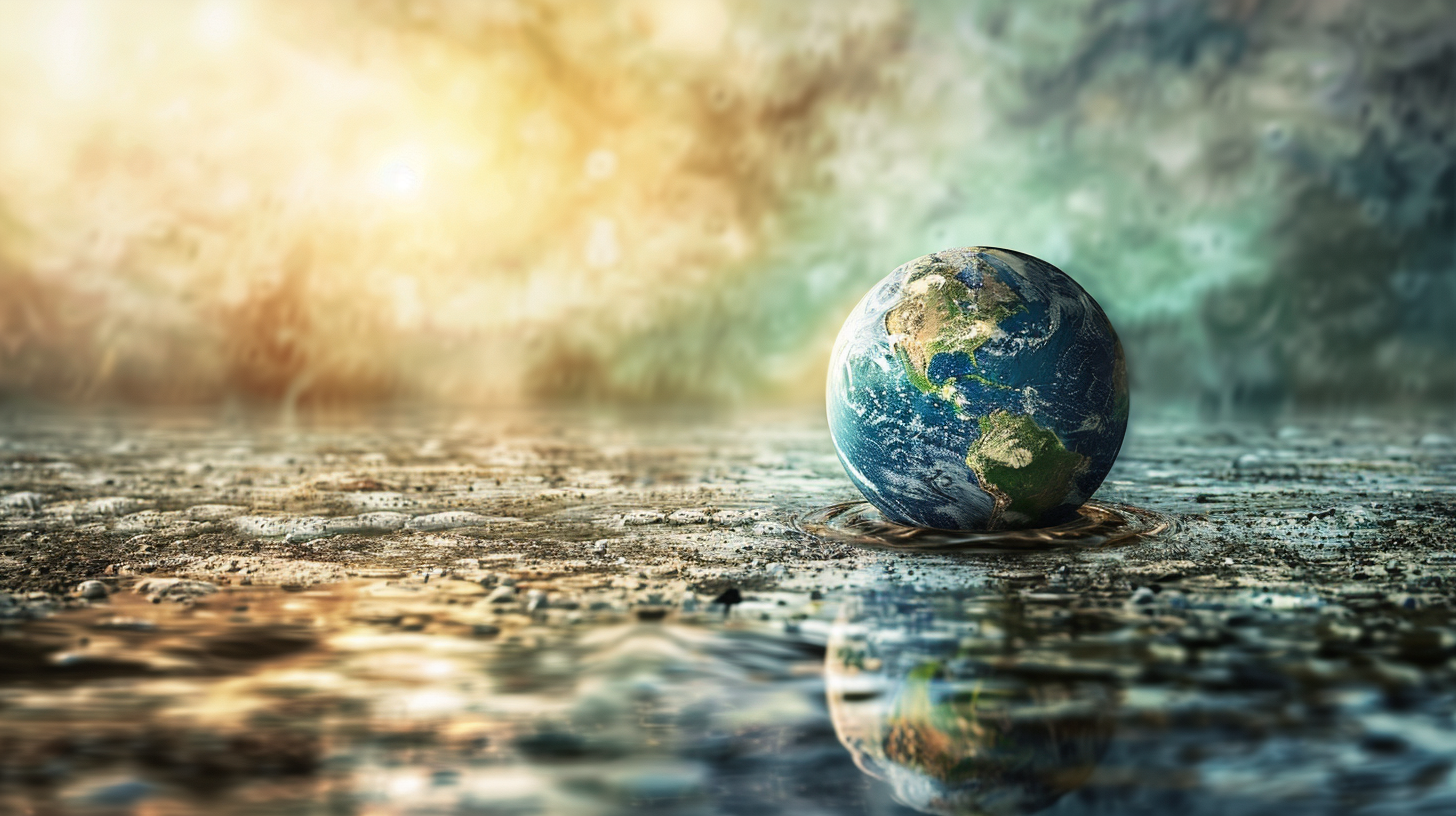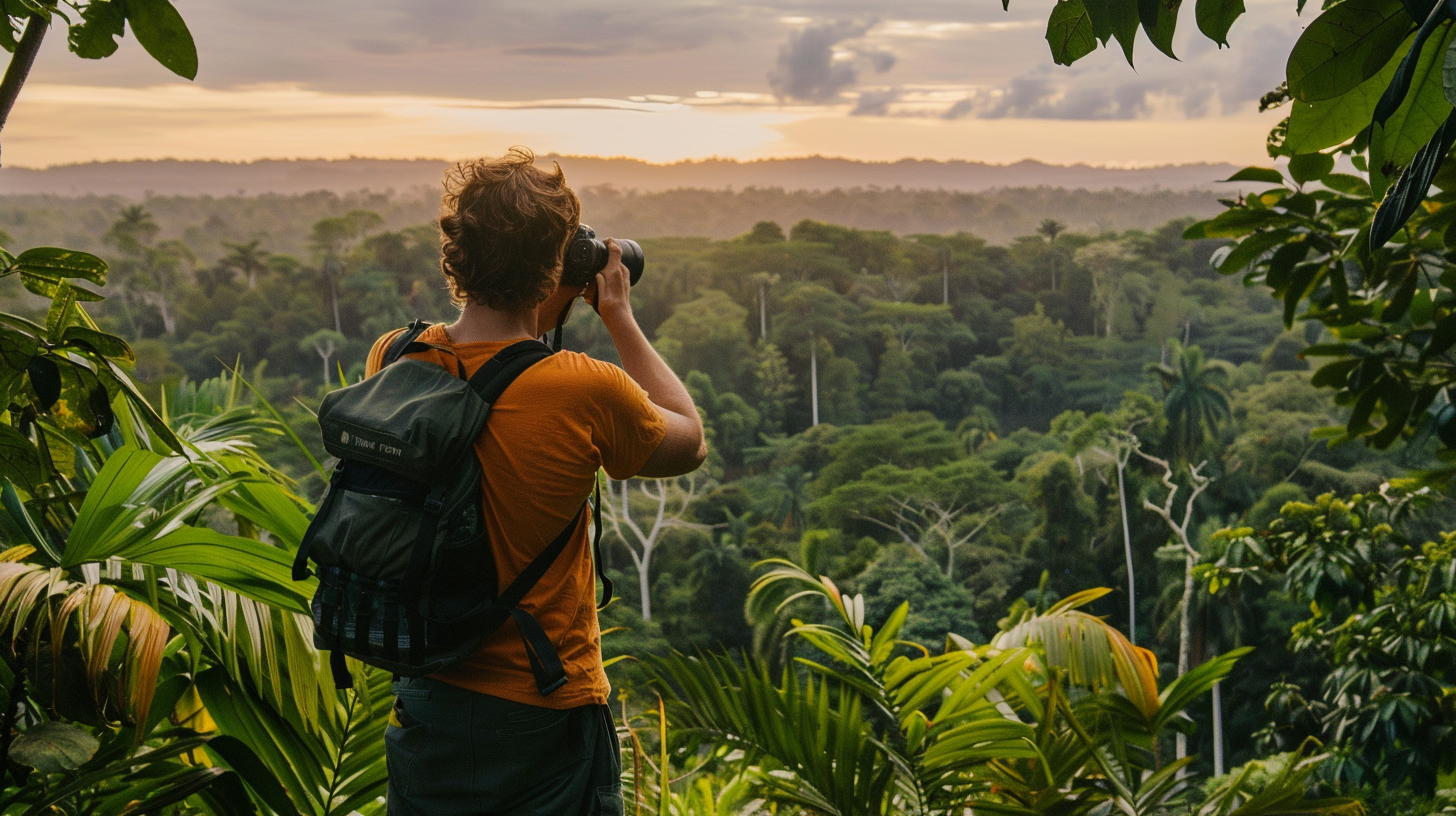Table of Contents Show
Most of us aren’t aware that approximately 70% of the Earth’s fresh water is locked away in glaciers and ice caps, leaving us to rely on a startlingly small fraction for survival. As we face escalating challenges of water scarcity and pollution, it’s essential we explore the impacts on human health, economic stability, and ecosystems. We’re at a pivotal moment where innovative management and pollution control strategies can pave the way toward sustainability. Let’s discuss how engaging communities and adopting new technologies could be our best shot at safeguarding this precious resource for future generations. What’s at stake is nothing less than our planet’s lifeblood.
Key Takeaways
- Water scarcity affects billions, necessitating conservation and efficient use to ensure future availability.
- Contaminated water sources lead to widespread health issues and diseases globally.
- Pollution and scarcity disrupt economies and ecosystems, raising costs and endangering species.
- Innovative solutions and global cooperation are essential to combat water crisis and achieve sustainability.
Understanding Water Scarcity
Water scarcity, a critical challenge we’re facing, directly affects billions of people worldwide. It’s not just about having enough water; it’s about access to clean, safe water that supports our freedom to live, grow, and thrive. We’re all in this together, seeking solutions that guarantee everyone’s right to water is respected and protected.
This scarcity isn’t a distant issue; it’s happening here and now, impacting our communities, economies, and ecosystems. We’ve got to understand that water is a finite resource, one that’s essential for life. When we’re talking about water scarcity, we’re acknowledging that the availability of usable water is limited, putting pressure on all of us to manage this crucial resource wisely.
We’re at a critical juncture, where our actions can either deepen the crisis or lead us toward sustainability. It’s about recognizing our collective responsibility to conserve and protect water. We can’t afford to wait; we need to act now to secure water for our future generations. This includes adopting practices that reduce waste, support water recycling, and enhance conservation efforts.
Our commitment to tackling water scarcity is a confirmation of our desire for freedom – the freedom to live in a world where resources are managed sustainably, and everyone has access to the water they need to lead healthy, productive lives. We’re all part of the solution, and together, we can overcome this challenge, ensuring a future where water scarcity is no longer a threat to our freedom.
Causes of Water Pollution
As we focus on the scarcity of clean, safe water, it’s also important to address the pollutants that compromise its quality and availability. The causes of water pollution are varied, deeply ingrained in our daily activities and industrial processes. It’s our responsibility to understand these sources if we’re to fight for a future where clean water isn’t just a privilege, but a right for everyone.
Here are the primary culprits behind water pollution:
- Industrial Waste: Factories discharging pollutants directly into rivers and oceans without treatment contaminate the water with harmful chemicals and heavy metals.
- Agricultural Runoff: Pesticides and fertilizers used in farming wash into nearby water bodies, leading to nutrient pollution that causes excessive algae growth.
- Household Waste: Everyday products like plastics, pharmaceuticals, and personal care products find their way into waterways, contributing to the pollution mix.
- Oil Spills: Accidental or illegal discharge of oil into oceans devastates marine life and ecosystems, making the water unsafe for consumption and recreation.
- Sewage and Wastewater: Untreated or inadequately treated sewage released into natural water bodies carries bacteria, viruses, and other pathogens, posing a serious threat to water quality.
We’re at a crossroads. By acknowledging and addressing these pollution sources, we pave the way towards sustainable water management practices. It’s about ensuring our freedom to live in a world where access to clean water isn’t compromised. Let’s take action, innovate, and advocate for policies that protect this essential resource for ourselves and future generations.
Impact on Human Health
Frequently, we overlook the direct connection between water pollution and its detrimental effects on human health. It’s easy to forget how crucial clean water is to our survival and well-being. Yet, the harsh reality hits us when we’re faced with the consequences of neglect and pollution. Dirty water isn’t just unpleasant; it’s a direct threat to our freedom to live healthy lives.
Every year, millions of people suffer from diseases linked to contaminated water sources. We’re talking about serious illnesses like cholera, dysentery, and typhoid, which can be fatal if not treated promptly. It’s heartbreaking to think that many of these diseases are preventable with access to clean water. But there’s more to it than just the diseases we’ve all heard of. Polluted water can also lead to long-term health issues, including liver and kidney damage, reproductive problems, and neurological disorders. These conditions can rob us of our vitality, our ability to work, and enjoy life to its fullest.
We can’t stand idly by while our health is compromised. It’s not just about the immediate impact; the long-term consequences on our well-being and freedom to live vibrant, healthy lives are at stake. Fighting for clean water means fighting for our freedom to thrive. Let’s not wait until the water crisis knocks on our door. It’s time to demand action and support efforts to clean up and protect our water sources. After all, our health, and our very freedom, depend on it.
Economic Consequences
Beyond its impact on human health, the water crisis also takes a heavy toll on economies worldwide. It’s not just about the water we drink or use in our daily lives; it’s about the broader implications that ripple through our economies, affecting everyone’s freedom to thrive and prosper.
The economic consequences of water scarcity and pollution are far-reaching, impacting industries, agriculture, and even leading to job losses. We’re seeing costs skyrocketing for businesses and communities as they struggle to secure safe water sources or treat contaminated water. This isn’t just a problem for the affected areas; it affects us all in some way.
Here are some key points to take into account:
- Increased production costs: Industries relying heavily on water for manufacturing processes face higher costs, which can lead to higher prices for consumers.
- Agricultural losses: Water scarcity can devastate crops, leading to food shortages and increased food prices worldwide.
- Infrastructure strain: The need for new or improved water treatment facilities places a financial burden on governments and taxpayers.
- Job losses: Sectors like agriculture and manufacturing can face significant job cuts due to water-related challenges.
- Investment risks: Water scarcity poses risks to investors in water-intensive industries, potentially leading to economic instability.
Understanding these consequences is essential for us as we seek paths to sustainability. It’s about ensuring that everyone has the freedom to live in a world where economic stability isn’t threatened by the water crisis. Together, we can find solutions that safeguard our economies and our way of life.
Threats to Ecosystems
While the economic repercussions of the water crisis are indeed significant, it’s equally important to recognize how this issue threatens our planet’s ecosystems. We’re facing a dual challenge: safeguarding our natural habitats and ensuring our own survival. Let’s explore the specifics, showcasing the dire impacts on our ecosystems through a concise table:
| Threat | Impact on Ecosystems |
|---|---|
| Water Scarcity | Leads to loss of biodiversity, as species dependent on wet habitats struggle to survive. |
| Pollution | Contaminates waterways, harming aquatic life and disrupting food chains. |
| Habitat Destruction | Reduces the natural spaces available for species, pushing them towards extinction. |
| Climate Change | Alters weather patterns, affecting water availability and ecosystem health. |
We’re at a critical juncture where our actions can either lead to further destruction or pave the way for recovery. Our ecosystems are the backbone of our planet’s health, providing us with essential services like clean air, water, and fertile soil. They also offer us a space to feel free, to explore, to connect with nature, and to escape the confines of our daily lives.
As stewards of the Earth, we’ve got a responsibility to protect these natural resources. It’s not just about avoiding the worst; it’s about seizing the opportunity to foster a sustainable coexistence with our planet. We’re capable of making significant changes, but it requires a collective effort and a shift in mindset. Let’s prioritize our ecosystems, for they are the lifelines of our planet and the guardians of our freedom.
Innovative Water Management
In the face of the global water crisis, innovative water management practices are essential to our survival and the preservation of our ecosystems. We’re at a critical juncture where the choices we make today will determine the health of our planet for generations to come. It’s time we embrace the freedom to innovate and apply solutions that can turn the tide on water scarcity and mismanagement.
To engage you in this crucial conversation, here are some cutting-edge approaches we’re excited about:
- Smart Irrigation Systems: Leveraging technology to optimize water use in agriculture, reducing waste and ensuring crops get exactly what they need.
- Rainwater Harvesting: Capturing rainwater for reuse in both domestic and agricultural settings, decreasing our reliance on traditional water sources.
- Desalination Technology: Transforming seawater into fresh water, providing a lifeline to communities in arid regions.
- Water Recycling and Reuse: Treating wastewater to safe standards for non-potable purposes, a crucial step towards diminishing our freshwater footprint.
- Conservation-Efficient Landscaping: Promoting the use of native plants and xeriscaping to reduce outdoor water use significantly.
We’re standing at the crossroads of necessity and innovation. By adopting these practices, we’re not just securing our water resources; we’re championing the freedom to thrive in harmony with our environment. It’s a journey we must undertake with urgency and optimism, knowing that every step we take towards innovative water management is a leap towards a sustainable and flourishing planet.
Pollution Control Strategies
As we turn our attention to pollution control strategies, it’s clear we need to tackle the issue head-on. We’re focusing on reducing industrial discharges, enhancing wastewater treatment, and promoting the use of clean energy. These steps are vital for safeguarding our water resources for future generations.
Reducing Industrial Discharges
To tackle Earth’s water crisis, we must first address the issue of reducing industrial discharges through effective pollution control strategies. It’s about securing our freedom to enjoy clean water and a healthy environment. Here’s how we can make a significant difference:
- Implement stricter regulations on industrial waste discharge.
- Promote the use of green chemistry to minimize waste production.
- Encourage industries to adopt cleaner production techniques.
- Invest in research for innovative pollution control technologies.
- Foster partnerships between governments, industries, and communities for shared responsibility.
Enhancing Wastewater Treatment
Improving wastewater treatment offers a pivotal step towards mitigating Earth’s water crisis by purifying water before it’s returned to our ecosystems. We’re embracing innovative technologies and practices to make this happen. By upgrading our infrastructure, we’re not just cleaning water; we’re ensuring our freedom to enjoy natural resources without the looming threat of pollution. It’s about taking control and making sure our actions today don’t limit our choices tomorrow.
Advanced filtration systems, biological treatments, and chemical processes are part of our arsenal. We’re also encouraging industries and communities to adopt practices that reduce pollutants at the source. It’s a collective push towards a future where clean water isn’t a luxury but a standard. Together, we’re paving the way for a sustainable and free relationship with our planet’s most precious resource.
Promoting Clean Energy Use
In our journey to combat Earth’s water crisis, we’re now turning our focus to promoting clean energy use as a critical pollution control strategy. Shifting to clean energy sources not only reduces air and water pollution but also conserves water resources, freeing us from the constraints of fossil fuel dependency.
To engage everyone in this endeavor, consider the following actions:
- Embrace renewable energy for our homes and businesses.
- Invest in energy-efficient appliances to reduce energy and water consumption.
- Support policies that favor clean energy development.
- Educate ourselves and others about the benefits of clean energy.
- Participate in community clean energy projects to collectively make a difference.
Engaging Communities
We must actively involve local communities to tackle the water crisis effectively. It’s clear that the solutions we need won’t just come from the top down; they’ll bloom from the ground up, in the hearts and minds of those who live closest to the problem. By empowering local communities, we’re not just addressing the water crisis; we’re also fostering a sense of ownership and responsibility for water resources.
Let’s face it, when folks understand they’re part of the problem, they’re more willing to be part of the solution. We’ve seen it time and again—community-led initiatives not only bring innovative solutions to the table but also make sure these solutions are sustainable because they’re rooted in local culture and needs.
We’re talking about harnessing the power of collective action. It’s about creating platforms for dialogue, where community members can voice their concerns, share their ideas, and collaborate on projects that improve water management and conservation. We’re also advocating for education and awareness campaigns that equip people with the knowledge to make informed decisions about water use.
Engaging communities means recognizing and enhancing the role of indigenous peoples and local communities who’ve managed their water resources sustainably for generations. Their traditional knowledge is invaluable in our quest for solutions.
We’re all in this together. The freedom to live in a world where clean, accessible water isn’t a luxury but a given starts with empowering communities to act. Let’s make it our mission to make sure everyone’s voice is heard in the fight against the water crisis.
Toward Water Sustainability
Achieving water sustainability requires us to rethink our current practices and adopt innovative, long-term strategies. We’ve long taken our water resources for granted, but it’s time to make a shift. We’re facing a global crisis that can’t be ignored, and the path to sustainability is clear if we’re willing to take it. This isn’t just about survival; it’s about ensuring freedom for future generations—freedom from scarcity, pollution, and the conflicts that arise from them. Here’s how we can start:
- Embrace water-saving technologies: From agriculture to industry to our homes, there are innovations that can drastically reduce our water use.
- Support policies that protect water sources: It’s essential to back legislation that defends our rivers, lakes, and aquifers from pollution and over-extraction.
- Invest in clean water infrastructure: Many communities suffer because they lack access to clean water. We’ve got to build and maintain systems that guarantee everyone has the water they need.
- Educate and engage: Knowledge is power. The more we grasp about water conservation, the better equipped we are to make changes in our daily lives.
- Promote water recycling and reuse: Let’s get creative with how we use water. There’s a lot we can do with ‘greywater’ and rainwater collection.
It’s up to us to forge our path to water sustainability. By taking these steps, we’re not just securing our water supply—we’re fighting for our freedom to live on a healthy, thriving planet. Let’s not wait any longer.
Conclusion
As we’ve explored the depths of Earth’s water crisis, we’ve uncovered its roots in scarcity, pollution, and our collective negligence. Yet, in this journey lies the proof of hope. By embracing innovative management, pollution control, and community engagement, we’re not just addressing the symptoms but nurturing a sustainable future. It’s a sign of our resilience, a reminder that in the heart of crisis blooms the chance for renewal. Together, we’re turning the tide, coinciding with nature’s enduring rhythm.








